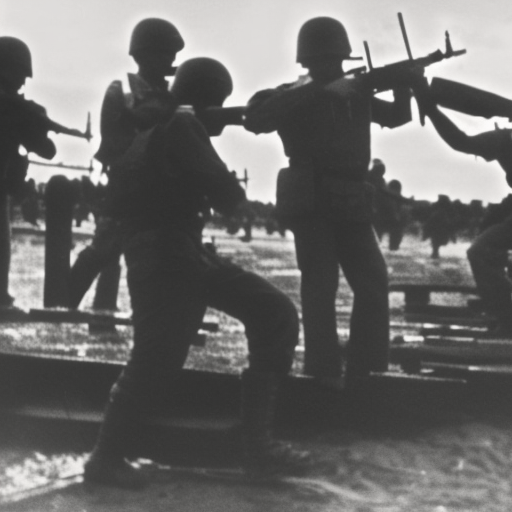Battle of Kapyong: A Crucial Turning Point in the Korean War
The Battle of Kapyong was a significant engagement that took place during the Korean War from April 22 to 25, 1951. It was fought between the United Nations (UN) forces, primarily composed of Australian and Canadian troops, and the Chinese People’s Volunteer Army (PVA). The battle occurred in the Kapyong Valley, located northeast of Seoul, South Korea.
Background:
By early 1951, the Korean War had reached a stalemate along the 38th parallel, with both sides struggling to gain a decisive advantage. The Chinese forces, who had joined the conflict in late 1950, were determined to push the UN forces back and regain control of South Korea. The Kapyong Valley was a strategically important area, as it provided a direct route to Seoul.
The Battle:
On April 22, 1951, the PVA launched a massive assault on the UN positions in the Kapyong Valley. The Australian and Canadian troops, part of the 27th British Commonwealth Brigade, were heavily outnumbered and faced intense enemy fire. Despite being outnumbered, the UN forces put up a fierce resistance and managed to hold their ground.
UN Defense:
The Australian and Canadian troops, under the command of Brigadier James Cassels, skillfully utilized the rugged terrain and established defensive positions on Hill 504 and Hill 677. These positions provided a clear line of sight and allowed the UN forces to effectively engage the advancing Chinese troops. The UN forces also received crucial air support from the United States, which played a significant role in repelling the enemy attacks.
Chinese Assault:
The Chinese forces launched wave after wave of attacks, employing human wave tactics to overwhelm the UN defenses. However, the UN forces, with their superior firepower and well-entrenched positions, inflicted heavy casualties on the Chinese troops. The Chinese assault continued for three days, but they were unable to break through the UN lines.
Crucial Turning Point:
The Battle of Kapyong proved to be a crucial turning point in the Korean War. The UN forces’ successful defense of the Kapyong Valley prevented the Chinese from advancing further south and potentially capturing Seoul. The battle showcased the resilience and determination of the UN forces, who were able to hold their ground against overwhelming odds.
Aftermath:
Following the Battle of Kapyong, the Chinese forces were forced to withdraw, realizing that their attempts to break through the UN lines had failed. The battle demonstrated the effectiveness of well-prepared defensive positions and the importance of air support in modern warfare. The UN forces’ victory at Kapyong boosted morale and provided a much-needed confidence boost to the allied forces.
Legacy:
The Battle of Kapyong is remembered as one of the most significant engagements of the Korean War. It highlighted the bravery and skill of the Australian and Canadian troops, who successfully defended their positions against a numerically superior enemy. The battle also underscored the importance of international cooperation within the UN forces and the determination to prevent the spread of communism in the region.
In recognition of their valor and resilience, the Australian and Canadian units involved in the Battle of Kapyong were awarded numerous honors and decorations. The battle remains a testament to the sacrifices made by the UN forces during the Korean War and their commitment to preserving peace and stability in the region.












